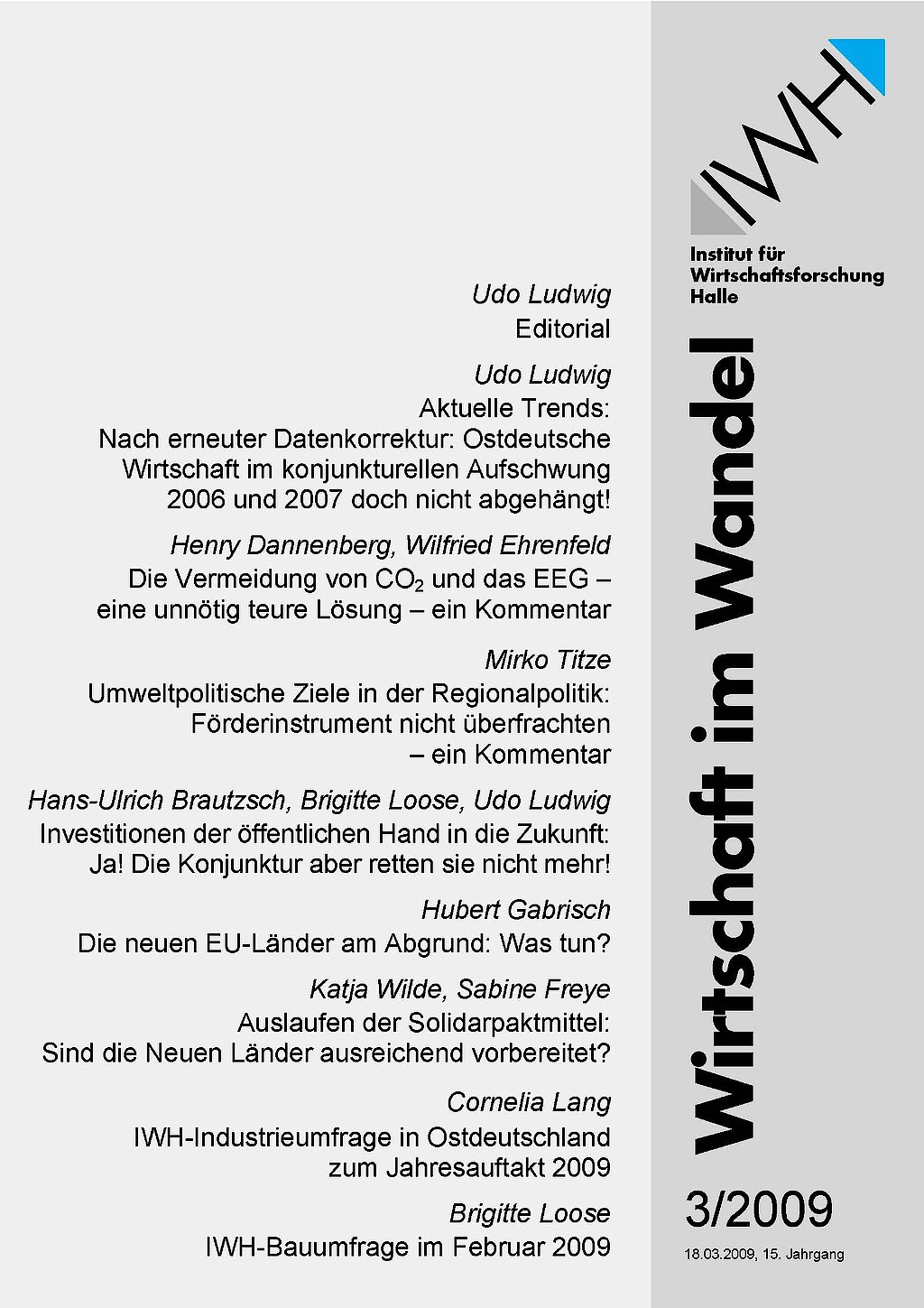Die Vermeidung von CO2 und das EEG – eine unnötig teure Lösung – ein Kommentar
Henry Dannenberg
Wilfried Ehrenfeld
in: Wirtschaft im Wandel,
No. 3,
2009
Abstract
In Deutschland existiert mit dem Erneuerbare-Energien-Gesetz (EEG) ein Instrument, das auch die Senkung von CO2-Emissionen zum Zweck hat. Die Sinnhaftigkeit dieses Gesetzes wird in jüngster Zeit in der deutschen Medienlandschaft vehement in Zweifel gezogen. Es wird bemängelt, dass die Verschmutzungsrechte, die aufgrund der mit dem EEG eingesparten CO2-Emissionen frei werden, verkauft werden können. So würden die eingesparten Emissionen in gleicher Menge an anderer Stelle entstehen. Der CO2-Zertifikatehandel wurde 2005 als Instrument der europäischen Klimapolitik eingeführt. Ziel ist es, zu erreichen, dass eine von der Politik für einen bestimmten Zeitraum vorgegebene Emissionsmenge nicht überschritten wird. Der Emissionshandel wurde deshalb gewählt, da durch dieses Instrument genau dort Emissionen eingespart werden, wo die Reduktion am kosteneffizientesten ist. Durch die sukzessive Reduktion der von der Politik erlaubten CO2-Menge soll so ein Beitrag zum Klimaschutz geleistet werden. Leider trifft die Kritik am EEG nicht immer den eigentlichen Kern. Es ist wenig zielführend, darüber zu streiten, ob die durch das EEG eingesparten Zertifikate in Deutschland oder in Polen verbraucht werden – das ist ein Effekt des Emissionshandels. Relevant hingegen ist die Frage, ob es effizient ist, durch das EEG CO2 einzusparen, oder ob dieselbe Menge CO2 preiswerter an anderer Stelle eingespart werden kann. Mit der Einführung des CO2-Zertifikatehandels hat die Politik aber anerkannt, dass der Markt am besten in der Lage ist, die Investitionsmöglichkeiten zu identifizieren, mit denen eine gewünschte Reduktionsmenge am preiswertesten realisiert werden kann. Sobald die Politik durch Anreize diesen Allokationsmechanismus stört, mindert sie die gesamtwirtschaftliche Wohlfahrt.
read publication





